With housing prices continuing to rise in Australia and in Sydney in particular where the median house price is almost a million, it’s important to look at the various factors affecting the housing market supply and demand.
There are a number of factors which have driven up the demand for housing, and in particular for home ownership, in recent years.
Demand-side Factors
1. Affordability of housing
Your income determines your purchasing power. An increase in income means that people can afford to pay more for luxury goods such as new homes. This is why the demand for housing increases during periods of economic growth and shrinks during a recession. Thus, an increase in household income translates into a significant increase in demand.

This graph above shows that as at December 2018 the national housing value to income ratio was measured at 6.7; down from 6.8 the previous quarter and 7.0 in December 2017 across the broad dwelling types.
The data shows that housing affordability is improving across the country. However, this improvement is being driven by falling values rather than a substantial lift in wages.
2. Speculative demand (buyer confidence)
Housing demand depends on buyer confidence in the speculative demand of a property over some time. Speculative demand, in this case, refers to people’s confidence in the future of the housing market (whether prices will keep going up) and the economy at large. When people expect prices to rise, demand for housing increases as more people attempt to make the most of their wealth.
In times of economic growth, home demand grows faster than income, as shown in the graph above. This improvement follows a long period when housing affordability deteriorated as dwelling values increased at a much faster pace than household incomes.
Check out “Capital Growth Trends Every Property Buyer Needs to Know“
3. Interest rates
Interest rates play an important role in determining the cost of mortgage interest payments. The interest rate in Australia averaged 4.14 per cent from 1990 until 2020, reaching an all-time high of 17.50 per cent in January of 1990 and a record low of 0.10 per cent in November of 2020.

The decline in interest rates brought about by the decline in inflation in the 1990s, together with financial deregulation, was a primary driver of the increase in prices between the early 1990s and mid-2000s.
More recently, strong population growth has put pressure on the available stock of housing. Together with the further reduction in interest rates following the global financial crisis, this drove a sharp increase in house prices between 2012 and 2017.
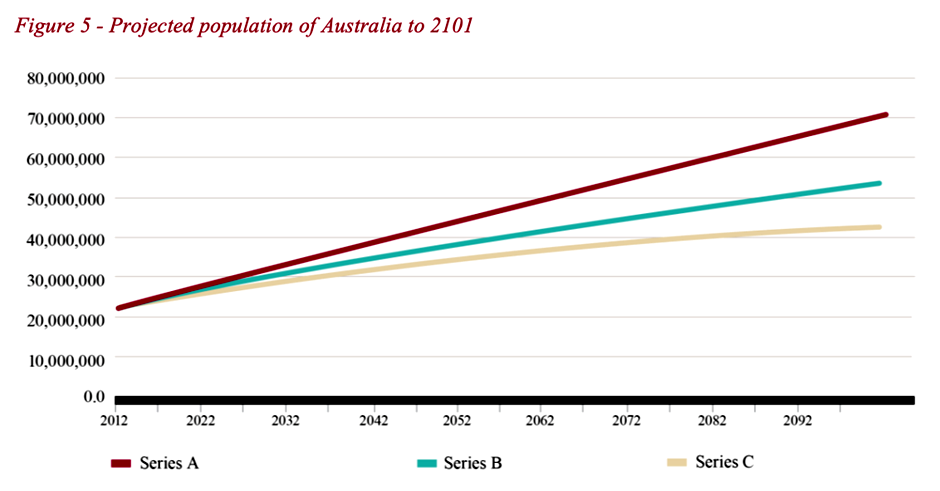
Growth in the number of households leads to an increase in the demand for housing.The current population of Australia is 25,616,947 and this is expected to grow by around 18.8 million persons (or 82.7%) to approximately 41.5 million by 2061.
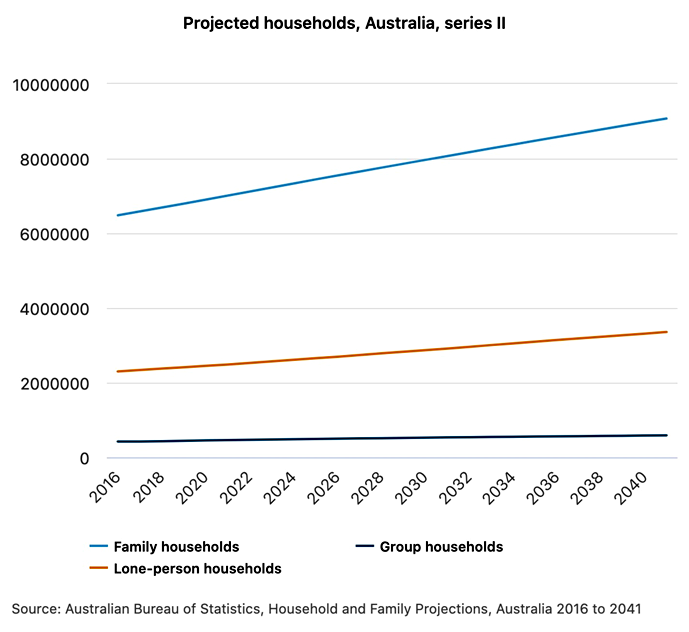
The number of Australian households is projected to increase from 9.2 million in 2016 to between 12.6 and 13.2 million in 2041. The number of families is projected to increase from 6.7 million to between 9.2 and 9.4 million.
Check out “Is Vacancy Rate an Indicator of Potential Capital Growth?“
5. Availability of mortgage
The willingness of banks to lend mortgages to home buyers is another factor that determines housing in Australia. When banks grant mortgage loans at higher income multiples – a multiple of your income banks use to determine how much they can lend you – the demand for housing increases.
According to an Australian Institute of Health and Welfare (AIHW) report, about 11.5% of households spent 30% to 50% of gross income on housing costs in 2017–18, with another 5.5% spending 50% or more.
Home-ownership rates have fallen amongst those on lower incomes as households in lower-income brackets spend a greater proportion of their income on housing.
6. Economic growth
Economic growth translates to rising incomes, meaning that more people will be able to invest in housing. This will increase the demand for housing and push up real estate prices.
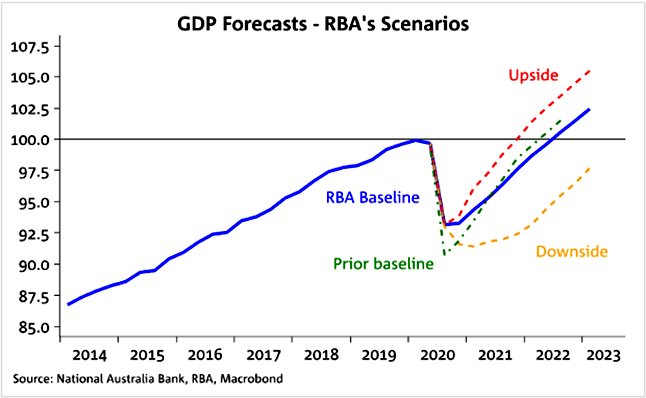
The Australian economy (as well as most parts of the world) took a big hit during the 2020 COVID pandemic. But 2021 is looking to be a year of economic recovery with median property values higher than they were a year ago in all capital cities.
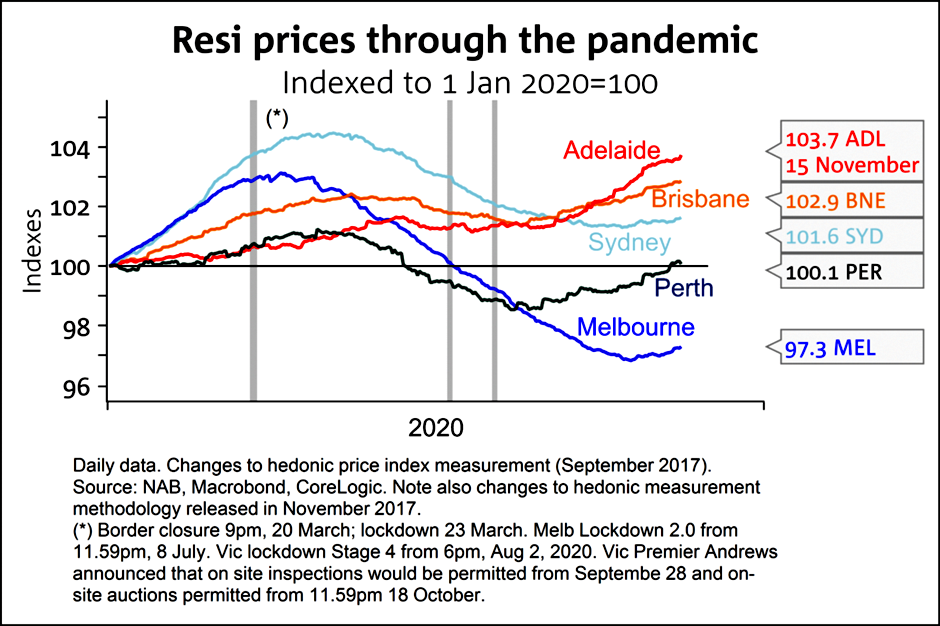
“Get your Access to our Fully Customisable Investment Property Research and Analytics Tool Now!”
7. Cost of renting
If the cost of renting is high, more people will attempt to buy a house as it becomes the most cost-effective option.
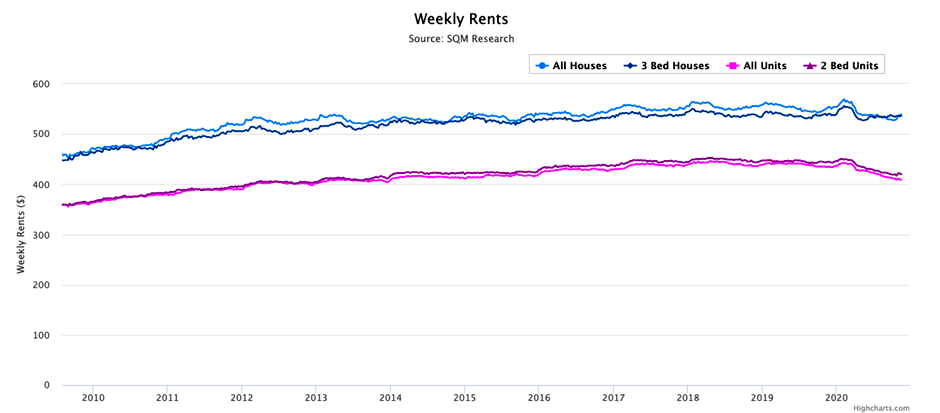
The chart above shows a gradual increase in the cost of renting with a sharp drop in 2020, most likely as a result of the national lockdown. The trend looks to be the same across all housing types with 3-bed houses costing as high as AUD$ 560 per week.
Supply-side Factors
- Numbers selling:As the number of home sellers increases, demand generally rises. Housingprices may also experience a relativedecline due to increased availability.
- Supply of housing:When the supply for housing is low, home prices often rise and vice versa.
- New builds:Similar to the supply of housing, changes in the number of new buildswill have an effect on nearby existing house prices.
- According to The Australian Financial Review, the number of new homes built across Australia is expected to drop by 25 per cent by 2023 after the all-time high boom over the 2015-2016 financial year.
- Building on Australian property is becoming more popular as a result of property investment, especially among young people entering the real estate market for the first time. This has become a significant contributing factor to the building of new homes in the country.
- However, house prices in the country’s eight major cities rose by 8.1% during the first quarter of 2020, representing the second consecutive quarter of the year on year house price growth and the biggest rise since 2017.
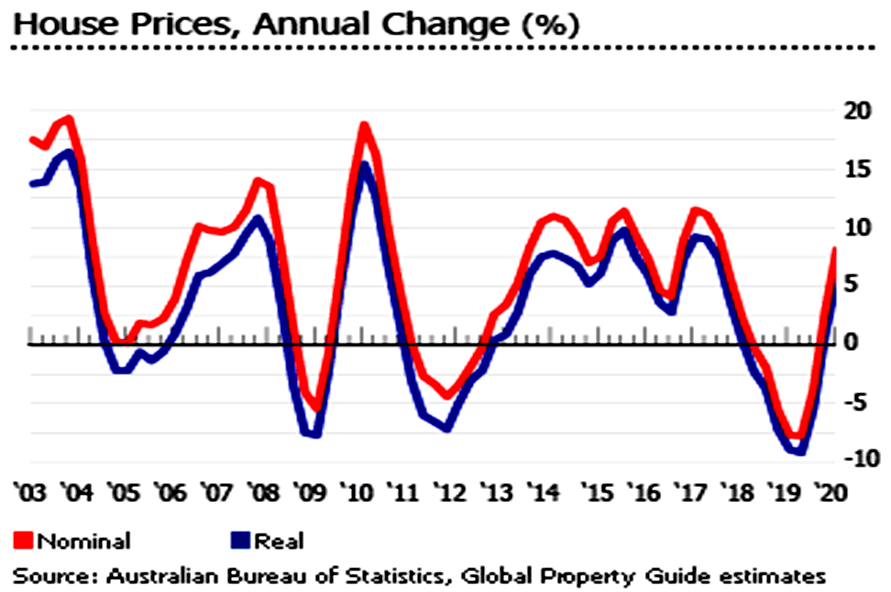
Long Term Factors
While the above factors can shift rapidly – a drop in interest rates can spike prices in a matter of months – there are other long term factors that impact housing prices as well.
A good example is the actual population and distribution of that population. With steady growth Australia’s population continued to increase while household sizes actually decreased with many single family or single person households. With fewer people sharing space and more people seeking space, the demand for housing naturally increases and prices with it.
Then the construction industry in Australia as a whole lagged behind demand for years, and in Sydney where National Parks and natural barriers make outward growth difficult, existing supply will continue to rise in price as long as demand is high from the above factors.
The combined effect of the above housing market factors has been an increase in value for property throughout Australia, and especially in Sydney, for some time. Short term factors are expected to remain strong and supportive of this growth while long term growth and demand won’t change for some time to come.
It’s easy to see how these factors could influence prices downward, but for the foreseeable future, they support continued healthy growth.
There is really so much to learn in property investing and SuburbsFinder is here to help you. We offer our services to help you find the best location to buy investment properties and more importantly, identify the right property to have.
Take advantage of our fully customisable tool to help you soon to be Hotspot areas and utilize it to be on top over the less-knowledgeable property investors, local real estate representatives, developers and owners. It lets you narrow down 15,000+ suburbs by combining all 40 data points as filters. It also lets you compare suburbs historical & current performance. And once you identified the best location our tool also lets you do feasibility studies on 5 properties all at the same time. Save time, budget, and cover the full cycle of your investment property research workflow.
So, if you think what we’ve built will drastically decrease your time researching for the best location and finding the right property based on your goals and financial situation, why don’t you sign up and give it a try.
It is the most comprehensive location report of all 15,000+ suburbs in Australia – with linked state, suburb, and postcode. It’s the perfect tool for property investors looking to buy a property to rent out rooms individually to have a positively geared portfolio.

